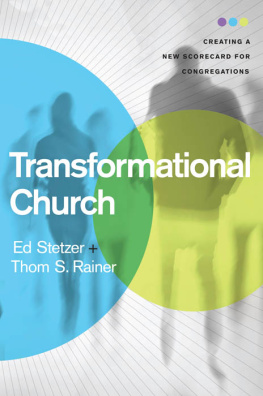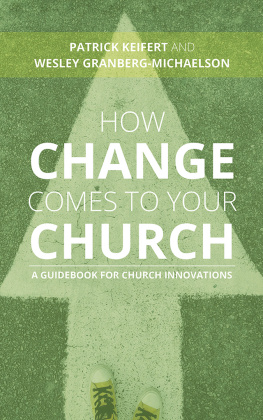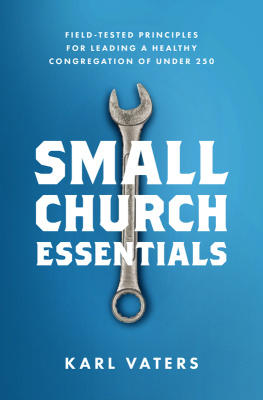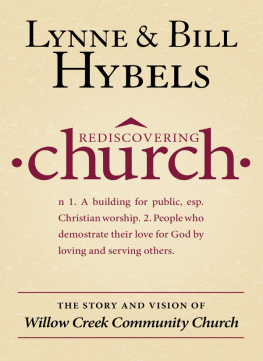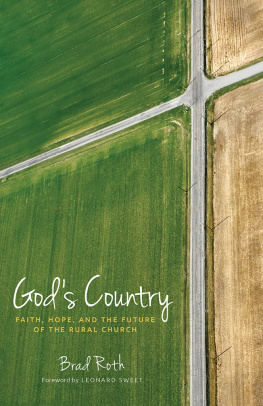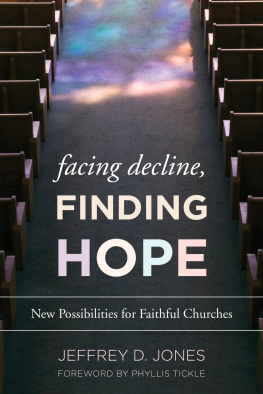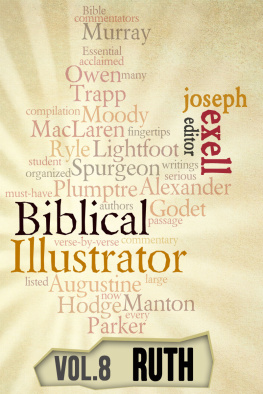Copyright 2021 Fortress Press. Published by Fortress Press, an imprint of 1517 Media. All rights reserved. Except for brief quotations in critical articles or reviews, no part of this book may be reproduced in any manner without prior written permission from the publisher. Email copyright@1517.media or write to Permissions, Fortress Press, PO Box 1209, Minneapolis, MN 55440-1209.
Unless otherwise cited, the Scripture quotations are from New Revised Standard Version Bible, copyright 1989 National Council of the Churches of Christ in the United States of America. Used by permission. All rights reserved worldwide.
It was the first Saturday afternoon in June, the day after the 2020 George Floydinspired Uprising began in Charlotte, North Carolina. A group of clergy had been summoned by Charlottes mayor Vi Lyles and city manager Marcus Jones to help them manage the crisis unfolding before them. In the streets the evening before there had been excessive violence and racial strife; the city was moments away from coming undone. There were about twenty of us clergy gathered in the large multipurpose room of Belmont Community Center on that day. We wore masks and kept social distance as a result of intersecting crises; the Uprisings occurred during the COVID-19 quarantine, making the violence of the prior evening even more troubling. The resonant baritone voice and seasoned Southern drawl of one of the three white male ministers in the room seemed to hold the attention of the city leaders as he talked about what might make for peace and justice in these troubled times. Because of the diversity and unique character of the congregation he pastored, he had a particular credibility with those in city leadership.
After this meeting I found myself in the company of Rev. Veronica Cannon and that man, this books author, Rev. Dr. John Cleghorn. Wed found our way to a rare open restaurant where we would be able to socially distance as we broke bread together. It was a blessed occasion. I was with two of my dear former students who have both excelled in ministry, and we had a chance to sit together and debrief as we pondered yet another police killing of an unarmed Black man.
As we sat in the open dining room, I noticed that we were just across the street from Covenant Presbyterian Church. This faith community is one of the most influential mainline congregations in the city, comprised of a large membership of affluent white people who were among the citys most prominent leaders. It was not by mistake that John led us to this restaurant, for it was across the street from his former church home. It was there that he began his ministry over a decade ago, there that I had first heard him preach, and from there that he left to take his first senior pastoral charge at Caldwell Presbyterian Church. This was a restaurant that he and his family frequented after Sunday worship services while they were Covenant members.
During a lull in the conversation, after staring at Covenant for a time, I asked John if, should the current pastor of Covenant ever leave for any reason, he would like to return to his old congregation as senior pastor. After all, Covenant was the church of former Bank of America CEO Hugh McColl (Johns former boss when in another life he was a senior vice president at that bank) and many other executives from banking and other industries. Covenant was the site of remarkable work addressing affordable housing in Charlotte, helping create hundreds of economically accessible apartments across the city. Covenant had even made a name for itself as one of the few congregations in the city that was leading dialogue on reconciliation between Israelis and Palestinians. Covenant was the kind of groundbreaking big-steeple church that many waited their entire careers to pastor. Without skipping a beat, he exclaimed a bold and decisive, No!
Having known John throughout his ministry, his answer did not surprise me. For he had become identified with the spirit of Caldwell Presbyterian Church, an intentionally intersectional congregation that brought together people white and Black, straight and LGBTQ, wealthy and impoverished, English and Spanish speaking, old and young. It is a vibrant space filled with a diverse cadre of mostly progressive congregants eager to live out Gods vision of inclusive welcome in the Elizabeth community of Charlotte. The members had long since become like family to John, for he had guided them through many conflicts and crises as they struggled with the question of whether they would be a mainline congregation that chose to emphasize racial reconciliation, LGBTQ inclusion, bridging the class divide, or welcoming our Latinx siblings, and to all the congregation answered emphatically, Yes!
Serving as the senior pastor at Caldwell had not been an easy calling. Indeed, it almost crushed John at different points as the intersecting oppressed communities struggled for attention and primacy, often leaving John to be both pastor and conflict moderator, standing alone between factions, at the cross. But the cross is the essence of intersection, and there Jesus is found, and John, though broken, found wholeness again and again and again, becoming ever more convinced that this was the ministry to which God had called him.
It is from his innovative ministry in that diverse context that this book was born. It is an examination of his journey. It is a roadmap to the land mines along that perilous way, attested by one who had on occasion triggered them. It is a research project that sets the Caldwell experience in the context of the small handful of other similarly situated intersectional congregations. But more than that, it is an invitation for you to reimagine what church can beno, what it should bewhen we are open to the free movement of the Spirit and the transformative power of being in Christ (Gal 3:28).
Caldwell Presbyterian Church is a community of people whose story deserves to be told. In a world that is increasingly divided along lines of difference exacerbated by the political realities of retrenched supremacy, nationalism, homophobia, and xenophobia in the aftermath of the 2016 elections, Caldwell is an oasis of convergence replete with many people who would be overlooked and underappreciated outside of the sanctuarys doors. Yet here they are choir members, ushers, ministers, and elders on session; here these people lead a distinctive intentional community that is reflective of Dr. Kings ideal of Beloved Community; here they are the manifestation of the marginalized multiethnic menagerie who made up the original first-century church in Palestine, Egypt, Ethiopia, and throughout the Greco-Roman Empire. Yes, Caldwell is in many respects radical inasmuch as it reflects the diverse roots of the Christian faith.
And John does more in this text than just tell their story. In a very careful way, he relates their narrative in connection with those of nine other similarly constituted congregations. All of them seem to have been intentionally crafted to be intersectional in response to the impending death of each worshipping community. The browning of the communities where they were located caused a decline in membership of these originally historic white congregations. Faced with the inevitability of death if they didnt change, these congregations chose change, significant change, change unusual in a world where congregations tend to be communities of those celebrating their sameness. Because of this change, congregational death gave way to new life; death gave way to resurrection!


